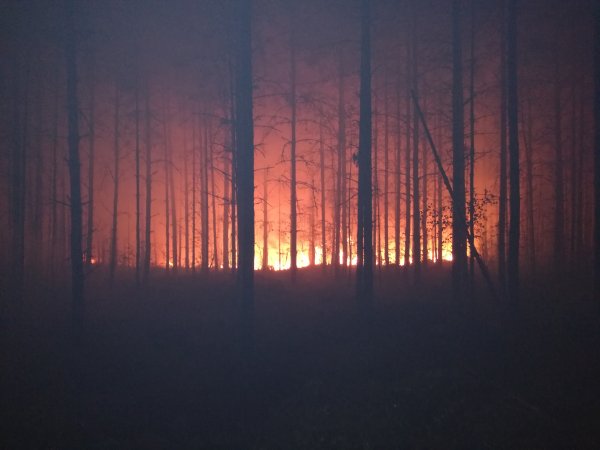
For Almost a Year, Kurzeme Regional Administration of the Nature Conservation Agency has been Hesitating to Endorse the Fire Safety Prevention Plans for Three Specially Protected Nature Territories
At the end of last week, the State Forest Service set the forest fire risk period throughout the territory of Latvia. This means that both forest owners and visitors must comply with the prescribed fire safety measures, while forest firefighters work in enhanced preparedness conditions.
The experience of both Latvia and other countries shows that the risk of forest fires is the greatest in specially protected nature territories. The increasing volume of dead and dry wood due to human inactivity contributes to rapid spread of fire, while the lack of forest roads and economic infrastructure caused by administrative bans hampers firefighting and stopping of the spread of fire.
Edijs Leišavnieks, JSC “Latvia's State Forests” (LVM) Forest Protection and Fire Fighting Manager, recalls the dry summer of 2018, when 83% of the burned down forests were located in protected areas. At that time, the largest forest fire of the last decade in Latvia broke out in Kurzeme – in specially protected nature territory “Stiklu purvi”. The fire destroyed almost one and a half thousand hectares of the territory of the nature reserve; residents of Stikli Village were also in danger. The forest fire restriction and eradication works lasted for ten weeks, with the responsible services working both day and night.
In order to promote rapid, operative and successful detection, restriction and elimination of forest fires, LVM has developed fire prevention plans for the entire area of the forests it manages, which have been coordinated with the State Forest Service. LVM has also developed individual plans for specially protected nature territories, the implementation of which requires not only the approval of the State Forest Service, but also the assessment by the Nature Protection Board.
In general, this process of coordination of plans has been successful in Latvia; however, Kurzeme Regional Administration of the Nature Conservation Agency has not allowed the implementation of preventive plans endorsed by the State Forest Service, creating obstacles to the implementation of fire prevention measures in three specially protected nature territories: in nature reserves “Stikla purvi”, “Ovīši” and “Ances purvi un meži”.
LVM is concerned and does not understand this situation where such delays significantly increase the risk of fire in these important areas. LVM calls on the responsible state institutions and officials to promptly participate in the reduction of fire risks in nature reserves.
“The current situation, when we are not administratively allowed to carry out the works provided for in the fire safety plans, raises concerns that in the forest fire risk period of 2020, LVM will not be able to ensure full implementation of fire safety preventive measures in these nature reserves,” says Edijs Leišavnieks, LVM Forest Protection and Fire Fighting Manager.


